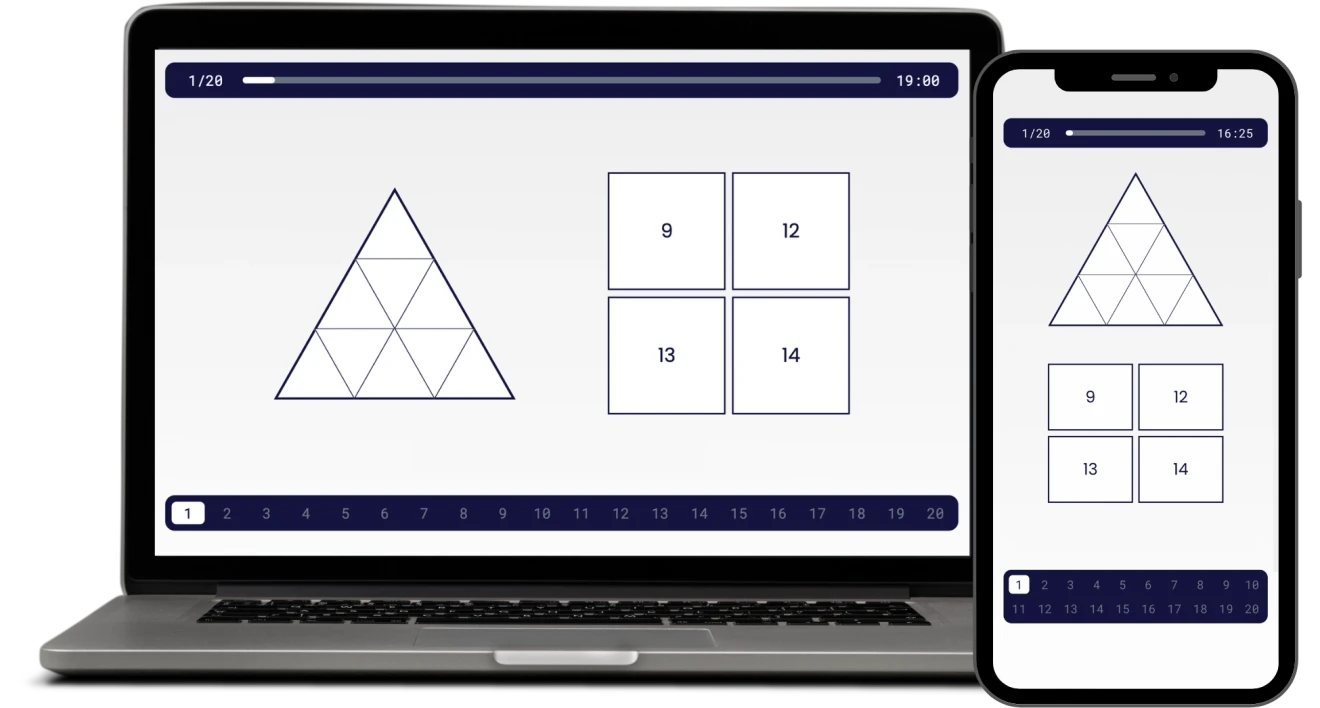Concept of IQ
- Assess your cognitive abilities
- 20 questions in less than 20 minutes
- Get your official IQ certificate
- Immediate analysis and results


The concept of Intelligence Quotient, commonly referred to by the acronym IQ, has a rich and complex history spanning more than a century. This measure of intelligence, although now widely recognized and used, has undergone many developments and controversies over the years.
The history of IQ has its roots in the early 20th century with the pioneering work of French psychologist Alfred Binet. In 1905, Binet developed the first intelligence test known as the Binet-Simon Test. The objective was to create a tool to identify children with academic difficulties in order to provide them with additional educational support. This test assessed skills such as memory, attention and reasoning.

It was the German psychologist William Stern who introduced the term "Intelligence Quotient" in 1912. He developed the mathematical formula which defines IQ as the ratio between mental age (determined by the test) and chronological age of the individual, multiplied by 100. This formula made it possible to quantify intelligence in a standardized way.
In the United States, psychologist Lewis Terman played a crucial role in the adaptation and popularization of the Binet-Simon test. In 1916 he published the Stanford-Binet Intelligence Scales, which became one of the most influential and widely used IQ tests worldwide.
In subsequent decades, other psychologists such as David Wechsler made major contributions to the evolution of IQ testing. In 1939, Wechsler introduced the Wechsler-Bellevue Intelligence Scale, which was revised and renamed the Wechsler Adult Intelligence Scale (WAIS) for adults, and the Wechsler Intelligence Scale for Children (WISC) for children. These tests stood out for their global approach to assessing intelligence, taking into account different cognitive facets.
Over the decades, IQ has sparked debate and controversy. Some critics have questioned the validity of IQ as a comprehensive measure of intelligence, pointing out that other forms of intelligence, such as emotional and creative intelligence, are not fully assessed by traditional IQ tests.
In response to these criticisms, new intelligence assessment models have emerged, aiming to take into account a broader range of skills and talents. Tests like Howard Gardner's Multiple Intelligences Developmental Assessment Scales (MIDAS) offer a more holistic perspective of intelligence, recognizing various forms of abilities and talents.
Despite criticism, IQ continues to have undeniable utility in many areas. It is widely used in education to identify student needs, design individualized learning programs, and guide educational interventions. Additionally, in clinical psychology, IQ is often incorporated into assessments to diagnose conditions such as autism, attention deficit hyperactivity disorder (ADHD), and other developmental disorders.
The history of the Intelligence Quotient is a fascinating saga that illustrates the evolution of our understanding and measurement of intelligence. From humble beginnings with the Binet-Simon Test to modern developments such as the WISC and WAIS, IQ has gone through a century of innovation and revision. While other models of intelligence emerge, IQ remains a valuable tool in evaluating and supporting individuals in their intellectual development.

At the turn of the 20th century, as scientific psychology was beginning to take root, a French psychologist named Alfred Binet created a revolutionary tool that would change the way we understand and evaluate human intelligence. In 1905, Binet published the "Binet-Simon Test", a major milestone in the history of intelligence quotient (IQ) measurement.
At the time, the need to measure intelligence had become imperative, especially in the context of education. School officials and teachers were looking for a way to distinguish children who needed extra support from those who naturally excelled. It is in this context that Alfred Binet set out to create an instrument that would assess intelligence in an objective and standardized way.
The Binet-Simon Test consisted of a series of tasks and questions designed to assess various aspects of intelligence, such as memory, attention, logic and reasoning. The questions were presented in increasing order of difficulty, making it possible to determine the level of intellectual development of the individual.
Binet carefully selected the test items based on age-appropriate criteria. He also ensured that the questions were understandable and interesting for children, to minimize any cultural or educational bias.
A major contribution of the Binet-Simon Test was the introduction of the concept of “mental age”. Binet observed that some children answered test questions at a level of intellectual complexity above their actual chronological age, while others performed below their chronological age. This led to the formulation of the concept of mental age, which was key to the method of calculating IQ.
The Binet-Simon Test had an immediate and considerable impact. It has been translated into many languages and has been used around the world. The tool allowed educators to more precisely identify students' needs and develop learning programs adapted to their level of intellectual development.
Over the years, the Binet-Simon Test has been revised and adapted to meet various requirements and cultures. The work of psychologists such as Lewis Terman in the United States led to the creation of versions such as the Stanford-Binet Intelligence Scales, which has become one of the most influential IQ tests globally.
Even today, the influence of the Binet-Simon Test is felt. The fundamental principles of intelligence assessment that he established continue to guide the development of modern IQ tests. The importance of measuring intelligence objectively and fairly remains a central concern in the fields of education and psychology.
The Binet-Simon Test remains an essential milestone in the history of intelligence assessment. It paved the way for a more nuanced and precise understanding of human intelligence and laid the foundation for the development of IQ tests that are used today. Alfred Binet's legacy endures, reminding us of the importance of measuring and understanding intelligence to better support the development of individuals.